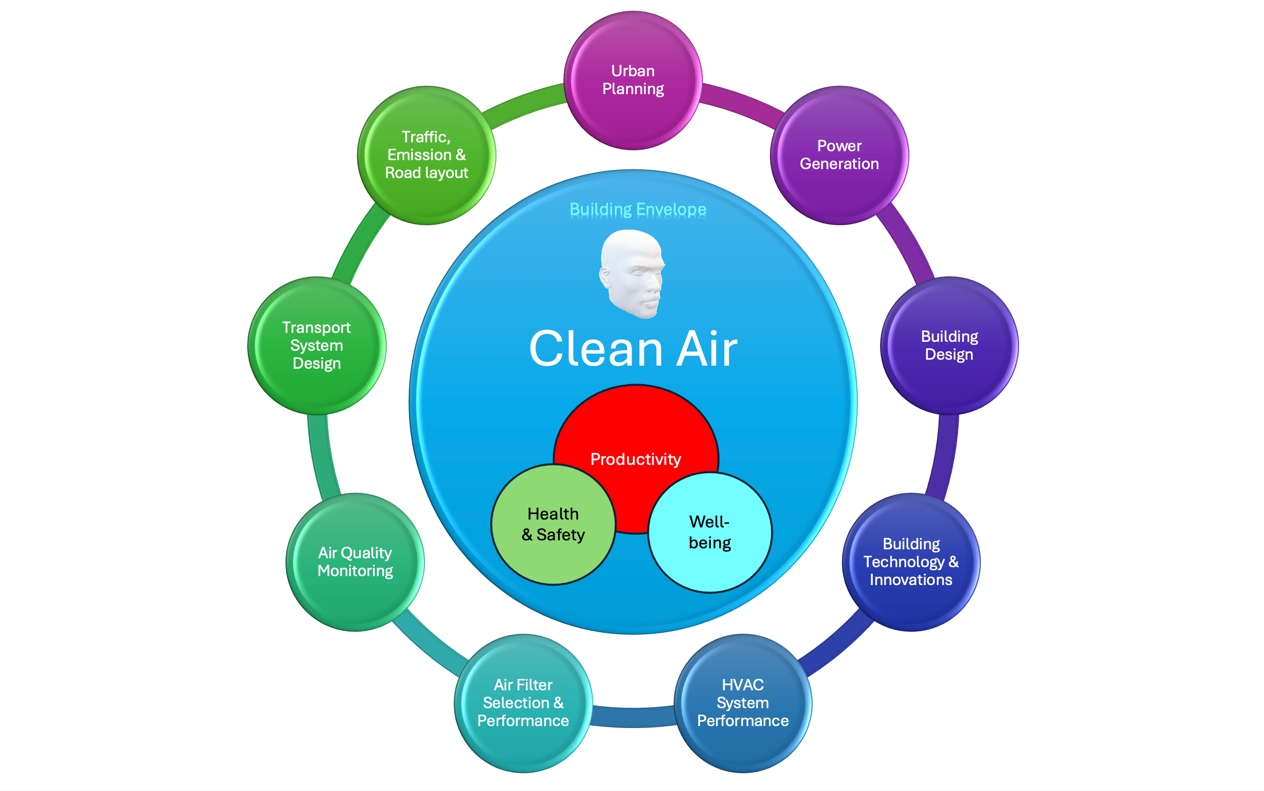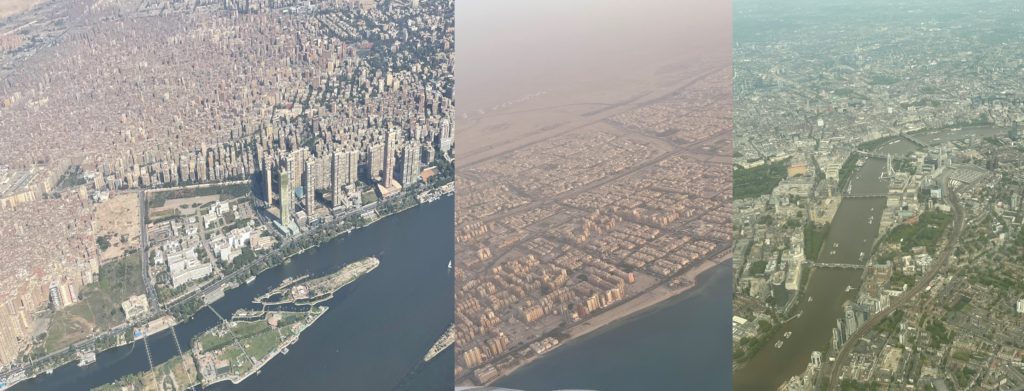Dr Iyad Al-Attar warns against the consequences of rising anthropogenic emissions with the onset of each dusk

Cities are the cornerstone of global prosperity, where people, money, trade and commerce converge. No nation has ever achieved wealth without urbanising. Cities attract talents and become hubs for ideas, innovation and technologies. They are where inhabitants can access decent education, employment, social mobility and dignified retirement.
Cities can embody sustainable lifestyles through waste reduction in land, energy, materials and resources. They have helped many nations rise out of poverty and progress to prosperity, and promote models of development rather than dependence. Today, urban design is the language of the city, enabling interactions among diverse communities while enjoying living in a built-environment filled with clean air.
Although many believe cities have triumphed and their nations have become wealthier and healthier than ever, others believe that their roads lead to an environmental hell. So, how is urban growth perceived and conceived, whether from the population or economic growth lens? We must ask the troubling questions that would reveal the truth about the trajectory of cities to prosperity.
The rapid growth of urban population sparks doubts relating to the ability of cities to accommodate the extra needs of inhabitants in terms of essential services, employment and education. And how will cities reduce crime, ensure security and integrate inhabitants into urban environments that are fairer, safer and more sustainable? Indeed, how will we protect ourselves in a complex urban world prone to unintended consequences, such as climate change, pandemics and other environmental risks?
Guiding and steering such growth in the right direction necessitates the adoption of human-centric frameworks in constructing new cities and revitalising existing ones. Expanding the scope of sustainable urban development to address the urgent issues and challenges of rapid urbanisation, such as operating efficient HVAC systems and ensuring clean air in healthy buildings, is just the beginning. The availability and delivery of clean air impact urban planning, the associated built environment and building envelopes, as illustrated in Figure 1. Improving indoor Air Quality (IAQ), selecting appropriate HVAC and filtration systems, enhancing building energy efficiency and reducing anthropogenic emissions (transport, buildings, power generation) are at the core of any sustainable urban development.

Addressing how innovation can enable energy-efficient processes and policies relevant to building design, construction and operation is critical to accelerating the decarbonising of our cities. In fact, constructing innovative buildings using advanced insulation materials can help minimise the required heat loads to achieve thermal comfort and optimise the selection of HVAC systems. A fundamental realignment is the establishment of a culture of sustainability among designers, developers and city inhabitants for air quality inclusion. It is also crucial to consider how a building interacts with the surrounding environment through energy use, heat and emissions reduction, and how much outdoor air is introduced indoors for ventilation.
Another fundamental realignment in constructing healthy buildings is admitting the critical importance of the legislative, technical, and ethical obligations of air quality. The disruption cities faced during the pandemic has proven that climate change is not the only existential risk confronting humanity. During the COVID-19 pandemic, cities were locked, loved ones died, jobs were lost, and solutions were sought through mandating masks and vaccinations. Building standards were tweaked, and “specialists” claimed they had perfected the ventilation rates and the filtration efficiencies required to reconfigure the air quality quest. The pandemic has revealed how our claws were blunt and beaks were bent when we should have been ready to combat the transmission of the virus. Ultimately, investigating the relationship between infectious diseases and cities must reflect the learnings of the COVID-19 pandemic towards a pandemic-proof urban environment. Furthermore, for buildings to be healthy, they ought to be equipped with adaptive ventilation and filtration systems capable of responding to any variation in IAQ and human occupancy. Optimisation of building envelopes for air quality purposes requires an understanding of the sources of pollution and the contaminants’ physical and chemical characteristics. Today’s technologies are capable of appropriately responding to any IAQ deterioration; it is just a matter of embedding them as a pillar of healthy building metrics.

Governments as regulators and drivers of change
Cities must establish strong policies and standards to develop a sustainable urban environment with air quality- and energy-related policies and practices. While solutions can come from legislation, technological advancement and innovation, public policies alone cannot stem the tidal forces of rapid urban change. The initial change has to come from the end-users – residents, businesses and industries – who must raise the bar of sustainable living.
As the primary regulators, governments must institute legislation to regulate energy use and reduce anthropogenic emissions. Furthermore, academic institutions can also collaborate with governments to facilitate sustainability knowledge and training, where a sound collaboration with the private sector can be established. Government incentive measures are vital to promoting research – through academic institutions – and innovation to progress towards a more efficient allocation of financial resources to decarbonise cities. An interface of policy and research is required to envision new ideas, methods and collaborations that can bring about necessary changes to ascend to the heights of sustainable city design. Universities such as Oxford, MIT and Harvard have played a role in prospering their cities (Boston and Oxfordshire), making them a hub of knowledge, innovation and education.
Governments can also induce change by implementing specific legislation and tax systems to promote sustainable energy use, or to curb and dissuade polluting, inefficient technologies and consumption habits. Furthermore, developing awareness and capacity-building tools for planning sustainable urban energy utilisation can prove invaluable in lowering our environmental footprints.
The lost message of air quality
The air quality message continues to miss the mark required for sustained success. The fluctuating interest in air quality, the contested meaning of clean air and the rival formulations of governing emissions form a cloudy and dissuasive foundation of how a healthy city is designed and built. Furthermore, air quality has been overlooked in urban planning and the built environment design in the past decades, and the resulting issues of such neglect have been exacerbated by escalating anthropogenic emissions. Left uncontrolled, excessive urban heat and pollutant concentrations demand extensive filtration stages and more effective HVAC equipment to condition the air for pleasant and healthy living. Therefore, combating the rising anthropogenic emissions lies in embracing sustainable urban development with air quality inclusion in its metrics. Air quality must emerge as a foundation for the built environment and a pillar of global economies to safeguard our building envelopes, and our well-being.

While we may live in architecturally different cities, we share common dreams and challenges of living in clean, green built environments. Air quality inclusion must emerge as a foundation for urban planning and a pillar of global economies to protect ourselves so we can live, grow and urbanise without polluting. No one wants to nor should have to breathe polluted air in our modern cities. Therefore, urban air quality governance is paramount to globally realign clean air, delivery, access and equity. Today, humanity possesses the knowledge, technologies and innovations to render sustainable building design irrespective of geography, culture or economy. Technologies that foster enhanced IAQ must manifest the desired vitality buildings need to be healthy, not unnecessary design complexities.
Empowering citizens to change
While we may be willing to change, we differ on how change should come about. We cannot simply drive change without empowering citizens and businesses to contribute to a more sustainable future. Climate change is a multidimensional complex issue, and the scale of the resilience-related challenges for cities is immense. Cities must warrant a critical understanding of the early signs of climate change and their impact on people, businesses, nations and ecosystems. Innovative knowledge and technologies can influence our perceptions of risk and our sense and science of climate change urgency. Relying on tapping into the innate humanity and having a panoramic view of the effects of climate change are not enough to stem the tide of air pollution. The world is replete with diverse perceptions of living sustainably amid the challenges of fossil fuel economies while addressing climate obligations and underpinnings.
Bearing the brunt
We cannot mistake our planet’s patience for consent and its climate change signs for natural occurrences. We must alter our lifestyles and consumption to orchestrate our environmental fate. Clean air represents the future and fortune of sustainable cities, as we cannot urbanise people from poverty to cluster them into polluted cities. We should speak a different sustainability language to induce change and switch gears to face our ecological future. If planet Earth is our only choice, we cannot treat it like an option and leave it to bear the brunt of our polluting misbehaviour. An ideal start lies in imagining a future where we can grow sustainably while breathing clean air. We must begin to be more efficient in using energy to address climate change through sustainable public transport, land use, urbanism and responsible lifestyles. Keeping our promise of a decarbonised world to the next generation is vital, but so is their chance to fight for their right to live, work and sustainably thrive.
Copyright © 2006-2024 - CPI Industry. All rights reserved.